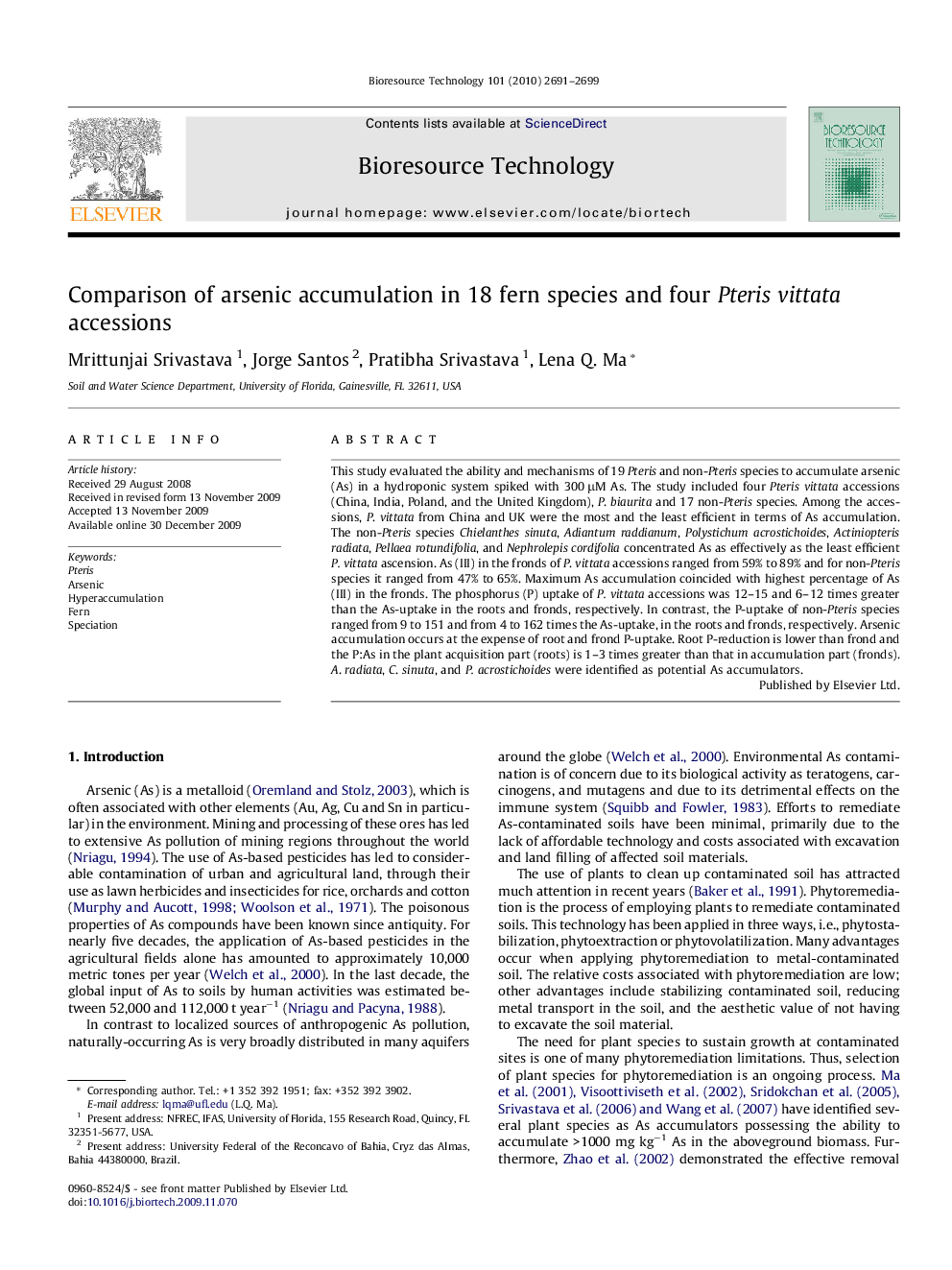| کد مقاله | کد نشریه | سال انتشار | مقاله انگلیسی | نسخه تمام متن |
|---|---|---|---|---|
| 683035 | 888994 | 2010 | 9 صفحه PDF | دانلود رایگان |

This study evaluated the ability and mechanisms of 19 Pteris and non-Pteris species to accumulate arsenic (As) in a hydroponic system spiked with 300 μM As. The study included four Pteris vittata accessions (China, India, Poland, and the United Kingdom), P. biaurita and 17 non-Pteris species. Among the accessions, P. vittata from China and UK were the most and the least efficient in terms of As accumulation. The non-Pteris species Chielanthes sinuta, Adiantum raddianum, Polystichum acrostichoides, Actiniopteris radiata, Pellaea rotundifolia, and Nephrolepis cordifolia concentrated As as effectively as the least efficient P. vittata ascension. As (III) in the fronds of P. vittata accessions ranged from 59% to 89% and for non-Pteris species it ranged from 47% to 65%. Maximum As accumulation coincided with highest percentage of As (III) in the fronds. The phosphorus (P) uptake of P. vittata accessions was 12–15 and 6–12 times greater than the As-uptake in the roots and fronds, respectively. In contrast, the P-uptake of non-Pteris species ranged from 9 to 151 and from 4 to 162 times the As-uptake, in the roots and fronds, respectively. Arsenic accumulation occurs at the expense of root and frond P-uptake. Root P-reduction is lower than frond and the P:As in the plant acquisition part (roots) is 1–3 times greater than that in accumulation part (fronds). A. radiata, C. sinuta, and P. acrostichoides were identified as potential As accumulators.
Journal: Bioresource Technology - Volume 101, Issue 8, April 2010, Pages 2691–2699